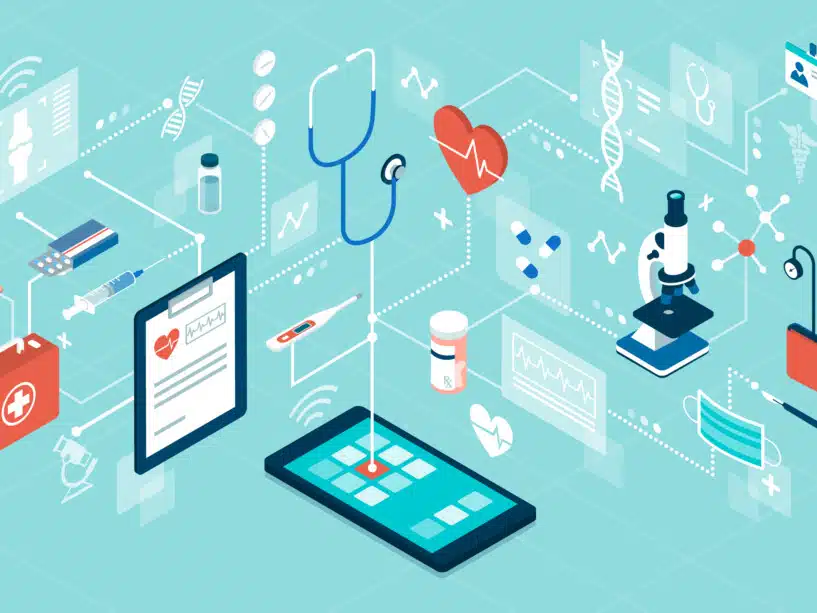4 Ways Mobile Apps Improve the Patient Experience

Ninety-three percent of healthcare execs say mobile apps can help health systems achieve digital strategy goals, according to Gozio’s 2022 “Secrets to Achieving High Mobile Adoption for Patient Engagement” report. And yet, nearly 20% of health systems don’t have a mobile app.
The report, which surveyed 272 healthcare executives, notes that the benefits of mobile apps aren’t limited to marketing. According to the report, nearly two-thirds of healthcare execs say that mobile engagement can help organizations reach broader business goals—from helping patients with scheduling and payments to guiding them around a facility.
Healthcare Mobile App Statistics
Here are some other key findings from the report:
- More than 80% of executives say their organization will invest in mobile technology over the next three years.
- Of the 82% of organizations that have some kind of mobile presence, only 38% rate its success as an eight or higher on a scale of one to 10.
- Most organizations say their apps have less than 10,000 downloads.
Opportunities for Healthcare Mobile Apps
Gozio recommends looking at the app experience from the end user’s perspective to find opportunities for improvement. Ask yourself:
- What would you want from a hospital app?
- How would you begin to engage with that app?
With that in mind, Gozio highlighted four specific areas where hospitals can improve their mobile offerings.
1. Decrease Wait Times
Healthcare can’t always be scheduled in advance, like in an emergency or when a sore throat strikes on the weekend, but that doesn’t mean patients can’t have a good waiting room experience. The most important part of a good walk-in experience is communication. Providing patients with timely updates brings some predictability to their wait and prevents frustration.
A good healthcare mobile app should let patients know exactly how long wait times are. Push notifications should alert patients to changes in wait times or their place in line. “The app needs to have a way of easing the unknown of wait times—even at the physician offices,” one healthcare executive told Gozio.
2. Improve Staff Efficiency
As one healthcare executive told Gozio, mobile apps should “solve pain points for staff, like digital options to make staff work easier, which would ultimately improve the patient experience.”
One time-consuming aspect of patient care that mobile apps make faster for patients and providers is answering patient questions. Patient portals give patients access to medical advice on demand, and staff can efficiently share information like lab results or minor follow-up details after discharge.
3. Increase Patient Retention
One healthcare executive told Gozio that their organization struggles with its reputation, which ultimately impacts the network’s patient retention. “The right mobile app will facilitate outreach that helps keep patients in your system, such as by connecting consumers to patient advocates or customer service representatives when questions that could affect the consumer’s view of the system arise,” the Gozio report wrote. “It will also serve as an intelligent resource for consumers by making them aware of services that could meet their needs, such as by alerting consumers to videos that promote new elective surgery offerings, targeted to specific demographics.”
One highly effective feature of mobile apps is the push notification. Data curated by PushEngage suggests push notifications have much higher open and engagement rates than email, making them an excellent tactic to present patients with timely information about post-procedure care, appointments and screening reminders. Research by Engagys suggests patients want personalized health information related to the health issues and concerns affecting them.
4. Facilitate Wayfinding
Multiple healthcare executives highlighted the need for mobile apps to help guide patients around a facility. “Our medical arts building is hard to find, and patients have trouble getting in and out,” one executive said. “We use volunteers and maps to help, but patients still get lost.” Another executive said: “No one was even thinking about how wonderful [wayfinding] would be for someone who just got diagnosed with cancer and had to find the surgery department.”

